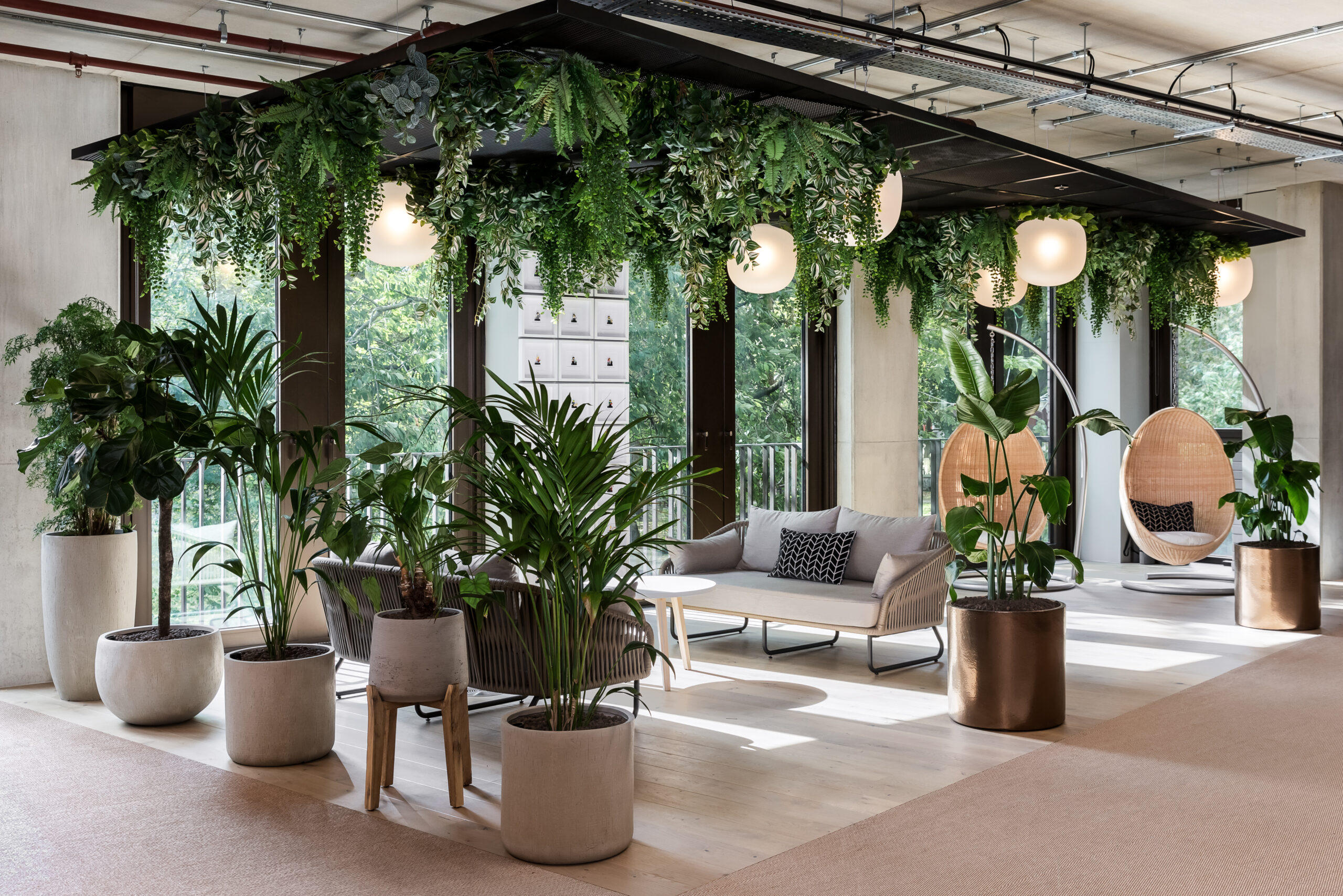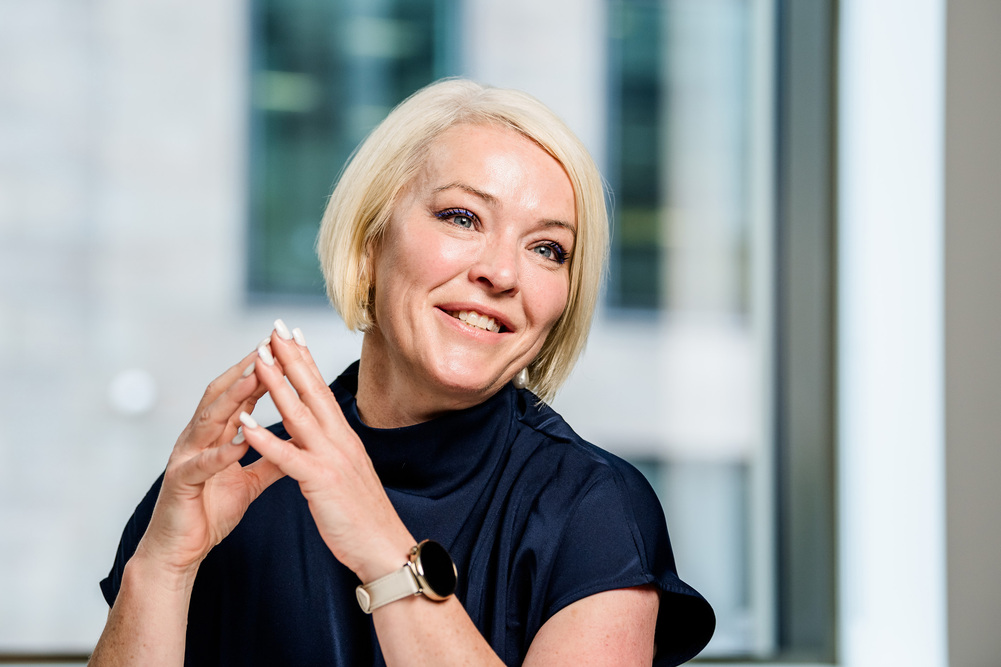Since 2020, the concept of the workplace has undergone a huge transformation. No longer confined to traditional office settings, the future of work is being shaped by a number of dynamic trends that emphasise adaptability, inclusivity, and sustainability. These trends are not only shaping how we work, but, crucially, the environments in which we work too.
According to research by tech consulting firm Gartner, 65% of employees say the pandemic has made them rethink the place work should occupy in their lives, while 52% say it has made them question the purpose of their day-to-day jobs. Additionally, research from Accenture has revealed that 83% of the global workforce identifies the hybrid model as the ideal workplace scenario.
As employees reassess their relationship with work, new demands and trends are reshaping perceptions about the office and our ways of working. In this article, we delve into five pivotal trends that are shaping the workplaces of tomorrow. From the growing importance of flexibility and fluidity in office layouts to the integration of cutting-edge technology that enhances hybrid work models, these trends reflect the shifting priorities of modern businesses.
Flexibility and fluidity
With shifting workplace strategies in recent years, the traditional fixed office set up has had to adapt. The majority of businesses are still working to a variation of hybrid, whether that be company-wide or autonomous, meaning the office is rarely at capacity for the entire week. Because of this, businesses are moving away from permanently assigned workstations and personal spaces, with flexibility and adaptability now key.
This change fosters more productive and collaborative interactions, with new conversations sparked by varied seating and working arrangements. By managing on-site schedules, companies can reduce the need for extensive shared working areas and desk space.
Research conducted by real estate agents Knight Frank shows that over half of surveyed business leaders plan to expand their hot-desking and desk-sharing practices—highlighting the popularity of this trend across the workforce.
Tech-enabled environments
Offices are evolving to become intelligent, tech-enabled environments. As leaders aim to support hybrid work models and critical business objectives, investment in workplace technology is rapidly increasing. One significant trend is the rise of smart office solutions, which integrate advanced technologies to create seamless, intuitive workspaces.
Audio Visual (AV) technology has seen substantial growth, particularly over the last few years as distributed workforces have become more common. Enhanced AV systems are set to remain a permanent fixture in modern offices, facilitating better communication and collaboration in hybrid work settings.
Automation and artificial intelligence (AI) are further transforming the workplace, improving both the employee experience and overall productivity. In many cases, it facilitates smart office management through automated systems for lighting, heating, and cleaning, and improves communication with AI-driven tools and virtual assistants.
For companies adopting flexible work models, capacity control systems like Condeco are becoming indispensable. These systems assist in workspace scheduling, remote booking, and resource management, ensuring that office spaces are used efficiently and effectively. As these technologies continue to develop, they will play a crucial role in shaping the future of work.
Neuroinclusive spaces
One in seven are neurodivergent (including conditions such as ADHD, autism, dyslexia, and dyspraxia), which highlights a growing need for workplace design to cater to unique needs. Designing spaces for neurodiversity is becoming a critical aspect of workplace inclusion plans, and progressive businesses are responding by integrating diverse requirements into their workspace designs.
A key trend is the increasing demand for quiet rooms, wellness areas and dedicated concentration spaces, which help neurodivergent individuals focus and reflect. These areas are typically designed to be low-tech and minimise distractions, strategically placed away from high-traffic zones. This approach acknowledges the necessity of supporting different cognitive styles and sensory needs in the workplace, ensuring that every employee can thrive in an environment tailored to their specific requirements.
Employee health and wellbeing
Employee wellbeing is set to be a key driver of workplace design in the coming years. Biophilic design and natural lighting will become more prevalent, as they are known to reduce stress and foster a sense of tranquillity. Offices will feature more moss walls, trees, and plants, along with access to roof gardens or landscaped outdoor areas.
Additionally, social spaces, sanctuary zones, and chillout areas will become common, providing employees with places to relax and recharge. Employers committed to comprehensive wellbeing initiatives will also offer wellness classes, meditation sessions, yoga, and a variety of healthy dining options, creating a holistic approach to employee health and productivity.
Sustainability
As the climate crisis intensifies, the urgency for sustainable workplaces is paramount. Businesses must significantly bolster their commitments to decarbonisation by implementing renewable energy initiatives, adopting sustainable operations, utilising green building materials, and optimising space and resource efficiency.
Sustainable workplace technology is integral, encompassing IoT, smart buildings, and sustainability platforms that minimise energy use. These technologies offer real-time data on energy and resource consumption, enabling precise management and substantial cost savings.
By integrating these solutions, office design can significantly reduce environmental impact, support ESG strategies, and attract eco-conscious employees. Social and environmental responsibility are becoming non-negotiable principles for any progressive office design strategy, ensuring a healthier, more productive work environment while maintaining corporate social responsibility.
The outlook for the future workplace
As we look to the future, it’s clear that the workplace is no longer a static environment but a dynamic, evolving space designed to meet the diverse needs of its occupants. Embracing these trends means creating environments that are not only adaptable and efficient but also inclusive and supportive of all employees. By staying ahead of these trends, businesses can ensure they are not just meeting the needs of today but are also prepared for the challenges and opportunities of tomorrow.
Author’s Profile:
Craig Smith, Oktra’s Chief Development Officer, leverages his unique perspective to anticipate how tomorrow’s workplaces will need to adapt to meet emerging needs. While his core role involves building high-performing project teams that deliver exceptional results for Oktra’s clients, Craig’s focus on effective collaboration and exceeding expectations aligns perfectly with the evolving workplace landscape. He understands the importance of adaptability, inclusivity, and tech-enabled environments and what is required to foster successful workspaces – where diverse strengths are harnessed to achieve optimal results.
Discover more about the latest workplace trends at Oktra.
You might also like:












